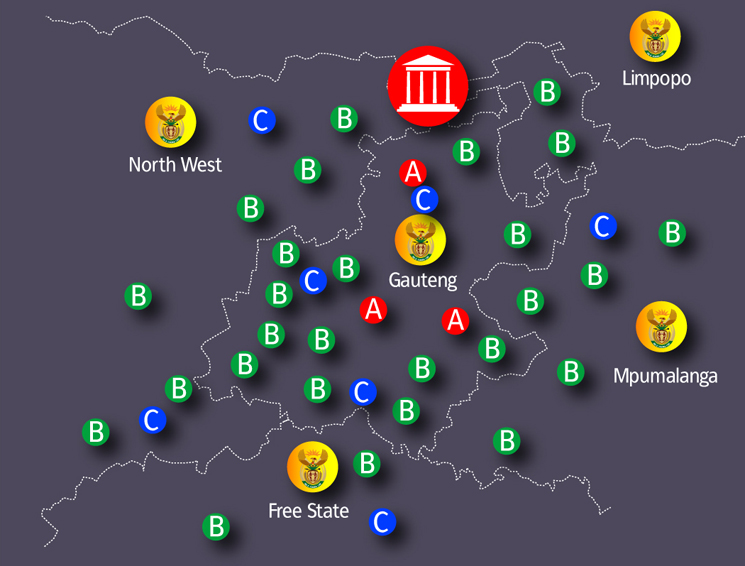
| working together | ||
The Gauteng city-region is so large, complex and dynamic that no one government authority could possibly encompass the whole. But to address the region’s challenges and ensure that it reaches its full potential, the different parts of government must work together. This is easier said than done. The GCR straddles the whole of one province, and parts of four others. It includes 15 local entities inside Gauteng, and another 16 outside the province. Some of these are large city-based metropolitan municipalities, some district municipalities, and some local municipalities. These local government entities are often very different in size. For example, the budget of the City of Johannesburg is 70 times that of Westonaria. Moreover, these municipalities do not always have corresponding interests. Municipalities that adjoin each other sometimes have ‘competing’ visions for development, with one wanting a spatial plan that prevents development up to its edge, and another wishing to promote development along a corridor all the way up to the boundary shared with the first. In these circumstances it is often very difficult to reconcile the different interests, both legitimate, of the two councils. The picture is complicated further by the fact that provincial and local government share some powers, and in areas such as ‘planning approvals’, local transport planning, housing development and others, interests do not always coincide. Complexity is compounded by the fact that some state-owned entities reporting into national departments have their own large budgets and development agendas, which are not referenced to provincial or local plans. |
||
 |
||
